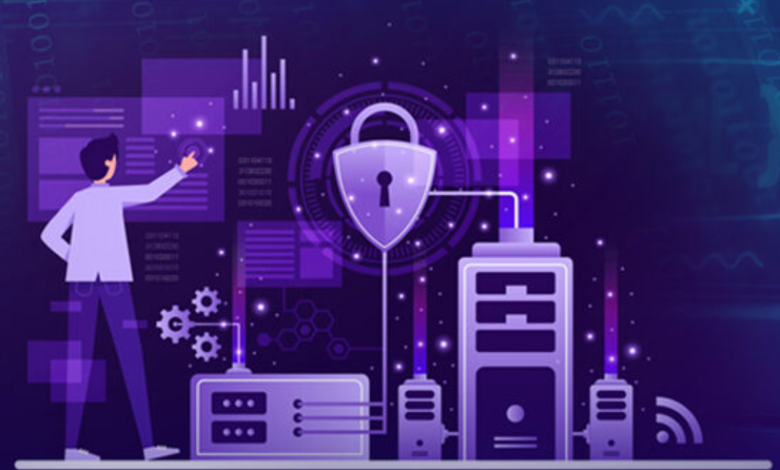Why Traditional DLP Tools Are Failing — And How AI-Powered Next-Gen Solutions Like Cyberhaven Are Changing the Game

In an era where data breaches, insider threats, and AI-driven cyberattacks dominate headlines, traditional Data Loss Prevention (DLP) tools are falling short of their promises. The security landscape has evolved dramatically, but legacy DLP systems remain stuck in the past — rigid, rule-based, and reactive.
Modern enterprises now face an overwhelming challenge: protecting data that moves fluidly across devices, applications, and cloud environments. With generative AI tools accelerating both productivity and risk, it’s become clear that traditional DLP is no longer enough.
Enter the new age of AI-driven, next-generation DLP tool — intelligent, context-aware systems like Cyberhaven, designed to understand data in motion, adapt in real-time, and secure information where legacy solutions can’t.
The Problem with Traditional DLP Tools
For nearly two decades, DLP tools have been a staple in enterprise cybersecurity. They were built to detect and block unauthorized data transfers through predefined policies — for example, preventing users from emailing sensitive files or uploading customer data to the cloud.
While this worked in simpler IT environments, today’s digital ecosystem is far more complex. Employees collaborate across SaaS platforms, cloud storage, and AI tools that constantly generate, modify, and share data. Traditional DLP solutions, designed for static environments, simply can’t keep up.
1. Static Rules and False Positives
Legacy DLP systems rely heavily on manual rules and pattern matching (like detecting credit card numbers or specific keywords). These rigid frameworks create endless maintenance overhead — every new workflow or application requires more policies.
The result?
- Overwhelming false positives that disrupt legitimate work.
- Missed alerts when data doesn’t fit a pre-defined rule.
- Security teams buried under noise instead of focusing on real risks.
2. Lack of Contextual Awareness
Traditional DLP treats all data equally — it knows what the data is but not why it’s moving or who is using it.
For example, a DLP tool might block a developer from uploading a code file to GitHub without understanding it’s part of a sanctioned project. Conversely, it may allow a marketing employee to upload sensitive customer data to an external drive simply because it didn’t match a “sensitive data” rule.
3. Cloud and AI Blind Spots
Cloud adoption and the explosion of AI tools have rendered old DLP blind. Traditional systems are often endpoint or network-bound, leaving vast amounts of data unmonitored in:
- SaaS apps (like Google Workspace, Slack, and Salesforce)
- Cloud storage (AWS, Azure, Dropbox)
- Generative AI tools (ChatGPT, Google Gemini, Copilot, etc.)
As employees increasingly interact with these tools, sensitive data often leaves the organization without detection.
The AI Revolution: How It Broke Traditional DLP
AI has transformed productivity — but also data risk. Employees now use AI tools to draft reports, analyze data, and automate workflows. In doing so, they may unknowingly expose confidential data to third-party systems.
Traditional DLP tools were never built to monitor or understand such interactions. They can’t recognize when sensitive data is pasted into an AI chatbot, nor can they differentiate between legitimate usage and potential data exfiltration.
The irony? AI’s rise has exposed the biggest weakness of traditional DLP — its inability to think.
See also: Improving Workplace Flow with the Right Tech Stack
The Shift to Next-Generation, AI-Powered DLP
Recognizing these failures, a new class of AI-native, behavior-driven DLP tools has emerged. Instead of relying solely on static rules, they learn and adapt to how data is created, accessed, and shared within a business.
How Next-Gen DLP Works Differently
Next-generation solutions like Cyberhaven don’t just scan files — they trace data lineage and understand context. Every data movement is analyzed in real time:
- Where did the data originate?
- Who is interacting with it?
- What is the intent behind the action?
- Does this behavior align with normal patterns?
By combining data tracing, user behavior analytics, and machine learning, these tools can distinguish between benign activity and real threats — dramatically reducing false positives while enhancing visibility.
Why Cyberhaven Represents the Future of DLP
Cyberhaven exemplifies how DLP is evolving from reactive to proactive, from static to intelligent. Unlike traditional DLP tools that merely block data movement, Cyberhaven maps the entire journey of data across the enterprise — from its creation to every copy, share, and transfer.
Key Innovations Behind Cyberhaven’s Approach
1. Data Lineage Intelligence
Cyberhaven continuously tracks the “story” of each data asset. It knows whether a file originated from a financial report, a source code repository, or a customer database — and how it travels through email, chat, and cloud platforms. This enables precise context-aware decisions.
2. Behavioral and Intent Analysis
Rather than enforcing rigid policies, Cyberhaven identifies anomalous behaviors that suggest insider threats or policy violations — such as an employee uploading proprietary code to a personal cloud account late at night.
3. Real-Time Protection Across Platforms
Cyberhaven monitors activity across endpoints, browsers, SaaS apps, and AI tools — securing data wherever it goes. This is crucial in the post-perimeter world where employees use multiple devices and cloud systems beyond traditional IT control.
4. Reduced False Positives
By combining context with intent, Cyberhaven minimizes unnecessary alerts. Security teams get fewer, higher-quality alerts that truly matter — freeing them to focus on prevention and response.
The Business Impact: Smarter, Faster, and More Secure
The benefits of AI-driven DLP go far beyond compliance. For modern organizations, it means:
- Stronger Insider Threat Protection: Detect and stop data misuse before it escalates.
- Enhanced Productivity: Empower employees without constant policy friction.
- Comprehensive Visibility: Gain a complete, unified view of data flows across all systems.
- Scalable Security: Protect hybrid and remote teams without overwhelming IT resources.
These capabilities transform data protection from a restrictive gatekeeper into an enabler of secure collaboration.
The Road Ahead: Intelligent DLP for an Intelligent World
As organizations embrace AI and cloud-native ecosystems, traditional DLP tools will continue to fade into obsolescence. They were built for a world of controlled networks and predictable workflows — a world that no longer exists.
The next era of data security is dynamic, contextual, and intelligent.
Tools like Cyberhaven represent the blueprint for this new paradigm — where data understanding replaces data restriction, and AI defends data with the same intelligence that creates it.
Final Thoughts
The message is clear:
Traditional DLP tools are failing in the age of AI.
Static rules and blind enforcement can no longer secure fluid, fast-moving data across digital ecosystems.
Next-generation, AI-powered DLP platforms like Cyberhaven are redefining what it means to protect data — providing visibility, context, and intelligence that finally align with how modern organizations operate.




